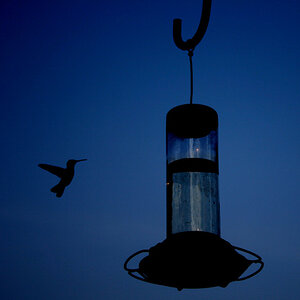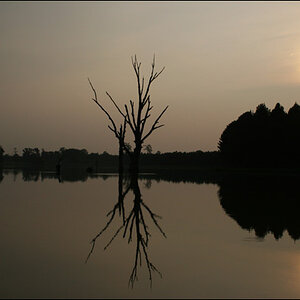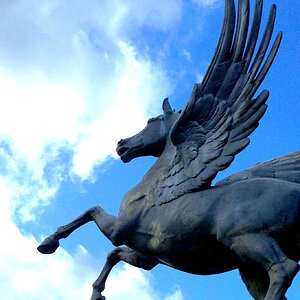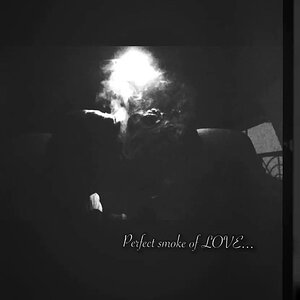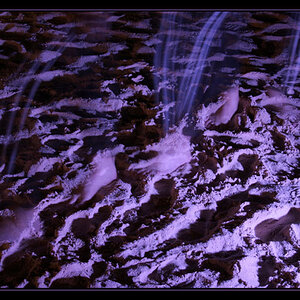nerwin
Been spending a lot of time on here!
- Joined
- Jan 31, 2015
- Messages
- 3,809
- Reaction score
- 2,123
- Location
- Vermont
- Website
- nickerwin.com
- Can others edit my Photos
- Photos OK to edit
I came across this Yashica FX-2 mechanical film camera at a flea market towards the end of summer last year for only $12 and it included a couple lenses. I couldn't pass it up, didn't care if it worked or not. I just thought it would be fun to tinker with for $12. I managed to get it working and shot 3 rolls of film through it.
Last week I added a diode to drop the voltage from 1.55v to 1.3 and that was a success...outdoors when in appreciate lighting conditions the light meter does read pretty accurate for the most part its within half a stop, however, once you meter in the shadows the needle goes WAY off the charts which tells me that the metering cell for the shadows is bad but the other cell seems to be functional. I guess it's better than nothing! I'm just going to roll with it and I'll just use an app if I have any doubts about the exposure.
Anyways...what has always bugged me was how disgusting the viewfinder was. It was soooo dusty and what looked like something got spilt on the viewfinder and created a coating. The focusing screen was dusty as well and my guess the prism was too. I looked and looked to find any instructions on how to clean these parts but they were non-existent. I did find an assembly chart from Yashica that had an entire parts breakdown of the camera..that was my only guide I had. I did spend an hour or so watching teardown videos of other film cameras from the 70s as they should be fairly similar and that I had some idea in my head going in.
So I cleaned off my desk, added a bright LED light..collecting the tools I would need and went to work.

Before the removal of the top cover I set the shutter speed dial to 1/1000th and ISO 12 because the both had a hard stop and less likely to be bumped when disassembling.

I managed to get the wind lever off and the film spool rewind/on-off switch assembly off. These were actually pretty easy to remove and with the parts breakout open on my monitor I could easy reassemble them in the correct order.

I had all the parts laid out in order that they were removed.

The shutter/iso dial was removed pretty easily. It can really only go on one way as its notched. You just have to watch out for the spring. I should have took more pictures during the process but I was just trying to keep focus. I mainly took some of these photos for references.

After removing one screw in the back of the camera and one screw under the removable nameplate, the top cover was ready to come off. I was worried that there was wires attached to the hot shoe but as you can see in this case it just uses a contact plate to make electrical connection because I saw on some cameras there was wires connected to the top cover luckily on this camera that wasn't the case. I did a brief visual inspection looking for any signs of corrosion but nothing stood out to me. Any thing that required grease, I check it and still seemed fine so I left it alone. I did do some light dusting with a brush and blew it out with my little rocket air.

There is a metal wire that has two springs attached that holds the shroud for the prism. I detached the springs and the plastic shroud slide out easy and then prism easily was removed revealing the focusing screen.

It was quite cool looking at the prism, it was pretty heavy too. I used some Zeiss glass cleaner and it made it spotless.

A closer look at the focusing screen.

And did a light cleaning using 99% isopropyl alcohol. It was kinda difficult to clean because its a fresnel lens but I did the best I could.

And after all that l cleaning I did the reverse order of disassembly and I was left with a clean viewfinder with minimal amount of dust (you can't make it perfect unfortunately) but it was soooo much better now. its also brighter too and you can easily see the split prism focusing aid a lot easier and sharper now. The most important thing is that everything still works and I didn't break it
Overall it was a fairly simple process, I don't think all cameras will be alike. The FX-2 is rather a simple basic mechanical camera but this was something I never done before and I'm proud of myself for getting the courage to do it and now I have some experience. As far as I'm concerned this camera has been fully restored to working condition. The shutter timings I also tested and they were accurate. The only thing that stinks is the meter but who needs a meter anyways? That's what sunny 16 is for!!
But I am attempted to buy a couple cheap doner FX-2 cameras that are listed broken mechanically and remove the CDS assembly and soldering them into my good working model and see if there's a chance a meter from another one is still functional.

It's pretty simple actually as you can take the whole thing out and two metering cells on either side are attached to the pcb. But is it worth the hassle? Probably not but it is fun tinkering with these and learning about it!
Overall, I had a great time.
Last week I added a diode to drop the voltage from 1.55v to 1.3 and that was a success...outdoors when in appreciate lighting conditions the light meter does read pretty accurate for the most part its within half a stop, however, once you meter in the shadows the needle goes WAY off the charts which tells me that the metering cell for the shadows is bad but the other cell seems to be functional. I guess it's better than nothing! I'm just going to roll with it and I'll just use an app if I have any doubts about the exposure.
Anyways...what has always bugged me was how disgusting the viewfinder was. It was soooo dusty and what looked like something got spilt on the viewfinder and created a coating. The focusing screen was dusty as well and my guess the prism was too. I looked and looked to find any instructions on how to clean these parts but they were non-existent. I did find an assembly chart from Yashica that had an entire parts breakdown of the camera..that was my only guide I had. I did spend an hour or so watching teardown videos of other film cameras from the 70s as they should be fairly similar and that I had some idea in my head going in.
So I cleaned off my desk, added a bright LED light..collecting the tools I would need and went to work.
Before the removal of the top cover I set the shutter speed dial to 1/1000th and ISO 12 because the both had a hard stop and less likely to be bumped when disassembling.
I managed to get the wind lever off and the film spool rewind/on-off switch assembly off. These were actually pretty easy to remove and with the parts breakout open on my monitor I could easy reassemble them in the correct order.
I had all the parts laid out in order that they were removed.
The shutter/iso dial was removed pretty easily. It can really only go on one way as its notched. You just have to watch out for the spring. I should have took more pictures during the process but I was just trying to keep focus. I mainly took some of these photos for references.
After removing one screw in the back of the camera and one screw under the removable nameplate, the top cover was ready to come off. I was worried that there was wires attached to the hot shoe but as you can see in this case it just uses a contact plate to make electrical connection because I saw on some cameras there was wires connected to the top cover luckily on this camera that wasn't the case. I did a brief visual inspection looking for any signs of corrosion but nothing stood out to me. Any thing that required grease, I check it and still seemed fine so I left it alone. I did do some light dusting with a brush and blew it out with my little rocket air.
There is a metal wire that has two springs attached that holds the shroud for the prism. I detached the springs and the plastic shroud slide out easy and then prism easily was removed revealing the focusing screen.
It was quite cool looking at the prism, it was pretty heavy too. I used some Zeiss glass cleaner and it made it spotless.
A closer look at the focusing screen.
And did a light cleaning using 99% isopropyl alcohol. It was kinda difficult to clean because its a fresnel lens but I did the best I could.
And after all that l cleaning I did the reverse order of disassembly and I was left with a clean viewfinder with minimal amount of dust (you can't make it perfect unfortunately) but it was soooo much better now. its also brighter too and you can easily see the split prism focusing aid a lot easier and sharper now. The most important thing is that everything still works and I didn't break it
Overall it was a fairly simple process, I don't think all cameras will be alike. The FX-2 is rather a simple basic mechanical camera but this was something I never done before and I'm proud of myself for getting the courage to do it and now I have some experience. As far as I'm concerned this camera has been fully restored to working condition. The shutter timings I also tested and they were accurate. The only thing that stinks is the meter but who needs a meter anyways? That's what sunny 16 is for!!
But I am attempted to buy a couple cheap doner FX-2 cameras that are listed broken mechanically and remove the CDS assembly and soldering them into my good working model and see if there's a chance a meter from another one is still functional.
It's pretty simple actually as you can take the whole thing out and two metering cells on either side are attached to the pcb. But is it worth the hassle? Probably not but it is fun tinkering with these and learning about it!
Overall, I had a great time.
Last edited:


 .
.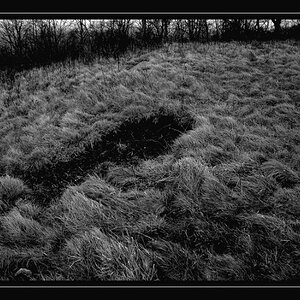
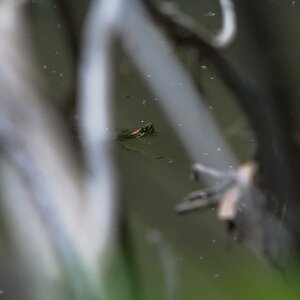

![[No title]](/data/xfmg/thumbnail/37/37119-95714aab9befe33ecb7b951366bedc94.jpg?1619737883)
![[No title]](/data/xfmg/thumbnail/37/37120-1d477daab99b292a0c740b50f1c96d53.jpg?1619737883)
